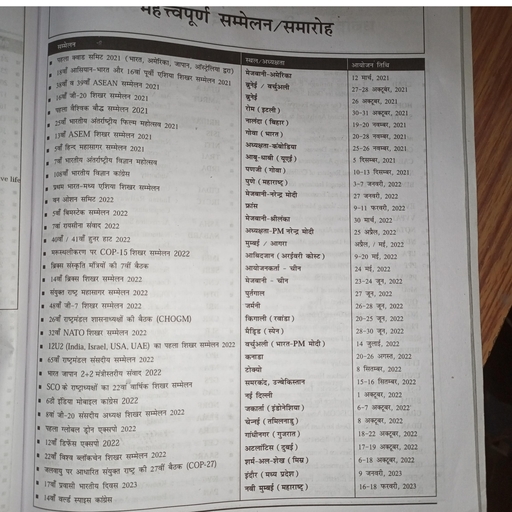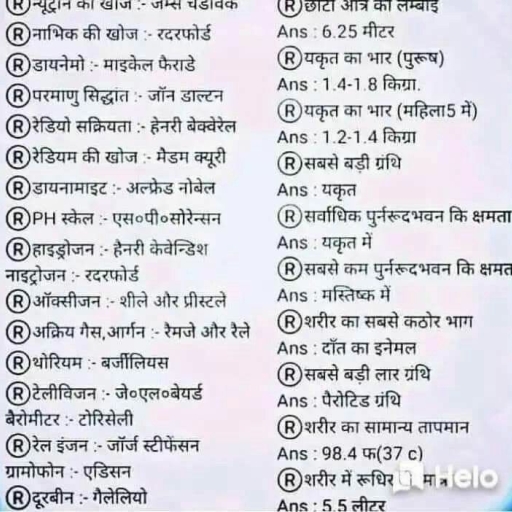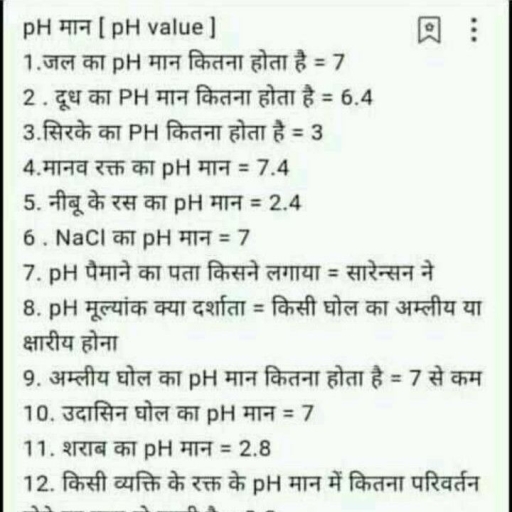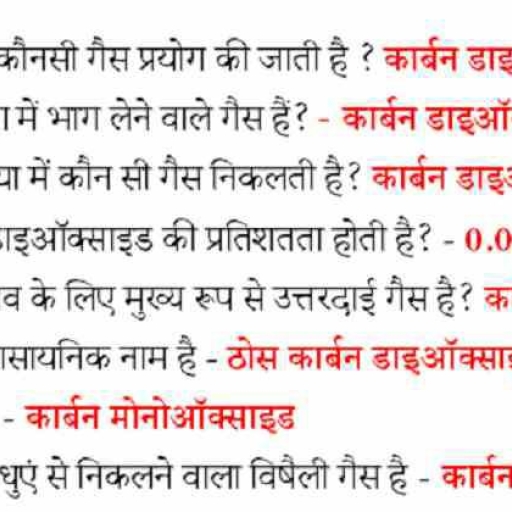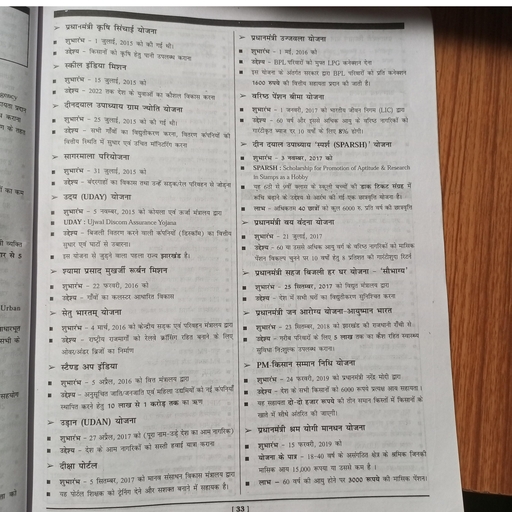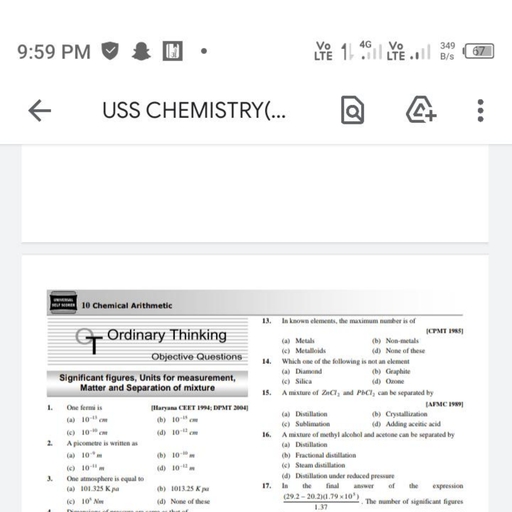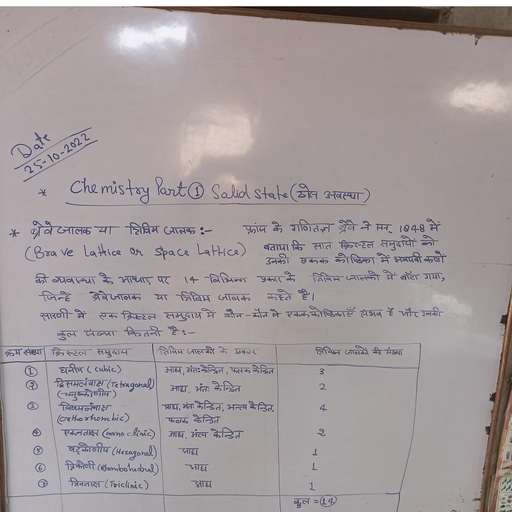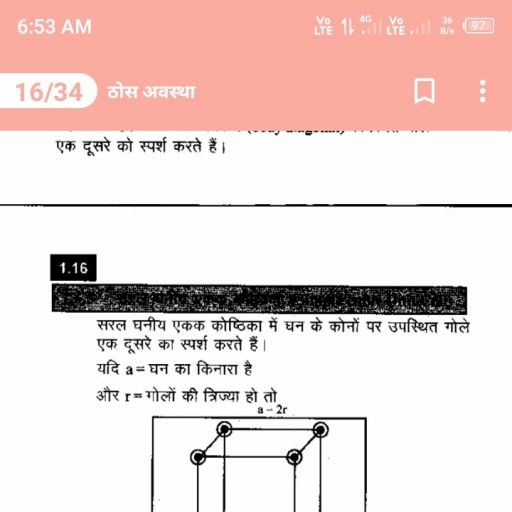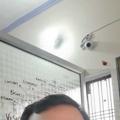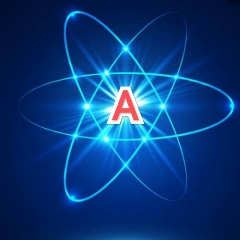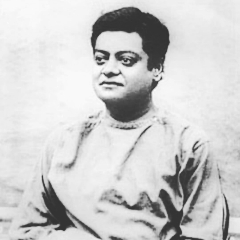Question 1 :
A capacitor of capacity C$_{1}$ charged up to V volt and then connected to an uncharged capacitor C$_{2}$.Then final P.D. across each will be:
Question 2 :
<span class="wysiwyg-font-size-small"><span class="wysiwyg-font-size-small"><p class="wysiwyg-text-align-left">A charge $‘Q’$ is placed at each corner of a cube of side $‘a’$. The potential at the centre of the cube is :</p>
Question 3 :
what is the potential difference between two points, if 2J of work must be done to move a 4 mC charge from one point to another is:
Question 4 :
Two parallel plate air capacitors have the same separation. The plates of the first are squares of side 10 cm. The plates of the second are squares of side 20 cm. The ratio of their capacitance is :
Question 5 :
The work done is carrying a charge q once round a circle of radius r with a charge q at the center is?
Question 6 :
The angle between electric lines of force and equipotential surface is :
Question 7 :
A 16 pF capacitor is connected to 70 V supply. The amount of electric energy stored in the capacitor is:
Question 8 :
The work done in moving a charge of 5 coulombsfrom a point at 230 volts to another point at 240 volts is.
Question 9 :
The capacitance of a variable capacitor joined with the battery of $100$V is changed from $2\mu F$ to $10\mu F$. What is the change in the energy stored in it?
Question 10 :
A conducting sphere of radius r has a charge. Then :<br>
Question 12 :
If $C$ is the value of the capacitance of a capacitor filled with a given dielectric and $a$ is the capacitance of an identical capacitor in a vacuum, the dielectric constant, symbolized by the Greek letter kappa, , is simply expressed as
Question 13 :
The value of the dielectric constant at room temperature (25 C, or 77 F) for air is 
Question 14 :
Work done in moving an electric charge <i>q </i>in an electric field does not depend upon :
Question 15 :
Displacement current goes through the gap between the plates of a capacitor when the charge of the capacitor
Question 16 :
A parallel plate capacitor is charged. If the plates are pulled apart
Question 18 :
What is the shape of the equipotential surface for the line charge ?
Question 20 :
Two identical positive charges are 0.6 meters apart. Which of the following is true about the electric field and potential at the point which is directly in-between the two?
Question 21 :
The retarding potential is generally greater in magnitude than the acceleration potential.
Question 22 :
If two similarly charged particles are brought near one another, the potential energy of the system will :<br/>
Question 23 :
Positive charge q is given to each plate of a parallel plate air capacitor having area of each plate A and separation between them, d. Then find Energy stored between the plates:
Question 24 :
The capacity of a condenser is $4 \times 10^{-6}$ farad and its potential is 100 volts. The energy released on discharging it fully will be
Question 25 :
Assertion: There is no current in the metals in the absence of electric field.
Reason: Motion of free electrons are random.
Question 26 :
From a supply of identical capacitors rated $8\ \mu F, 250\ V$, the minimum number of capacitors required to form a composite $16\ \mu F, 1000\ V$ capacitor is:
Question 28 :
An isolated hollow metal sphere is electrically neutral (no excess charge) and supported on an insulating stand. A small amount of negative charge is suddenly placedat one point P on this metal sphere. If we check on this excess negative charge a fewseconds later we will find one of the following possibilities :
Question 29 :
What is the electric potential at a distance $'x'$ from the centre, inside a conducting sphere having a charge $Q$ and radius $R$?
Question 30 :
The work done in bringing a unit positive charge from infinite distance to a point at distance x from a positive charge Q is W. Then the potential $\phi$ at that point is:
Question 32 :
For a capacitor, distance between the plates $=d$, p.d between the plates $=V,k=1$, area of each plate $=A$ and electric field between the plates $=E$. For another capacitor distance between plates $=d$, p.d between plates $=V,k=2$, area of each plate $=2A$ and electric field between the plates $={E}^{1}$. Relation between $E$ and ${E}^{1}$ is:
Question 34 :
The charge given to any conductor resides on its outer surface, because
Question 35 :
The energy stored in a capacitor of capacitance C having a charge Q under a potential $V$ is
Question 36 :
Two parallel plate air capacitors have the same separation. The plates of the first are squares of side 10 cm. The plates of the second are squares of side 20 cm. The ratio of their capacitance is :
Question 38 :
Two identical conductors of copper and aluminium are placed in an identical electric field. The magnitude ofinduced charge in the aluminium will be :
Question 39 :
When a dielectric is introduced between the plates of a condenser, the capacity of condenser :<br/>
Question 40 :
Two parallel-plate of capacitor have charges +Q and -Q and potential difference $\triangle V$ due to charging, Now the capacitor is disconnected then the potential difference and the stored electrical potential energy is:
Question 41 :
To bring a unit positive charge from infinity to a point in an electric field, some work has to done, which is called:<br/>
Question 42 :
Space between the plates of a parallel plate capacitor is filled with a dielectric slab. The capacitor is charged and then the supply is disconnected to it. If the slab is now taken out , then:
Question 43 :
Angle between an equipotential surface and electric lines of force is :
Question 44 :
<span class="wysiwyg-font-size-small"><span class="wysiwyg-font-size-small"><p class="wysiwyg-text-align-left">When air is replaced by a dielectric medium of constant $K$, the capacity of the condenser:</p>
Question 46 :
If the inductance and capacitance are both doubled in L-C-R circuit, the resonant frequency of the circuit will :
Question 47 :
The capacity of a parallel plate air condenser is $2\ \mu F$. If a dielectric of dielectric constant $4$ is introduced between the plates, its new capacity is:
Question 48 :
A metallic sphere of radius $18cm$ has been given a charge of $5\times { 10 }^{ -6 }C$. The energy of the charged conductor is :
Question 51 :
A parallel plate capacitor $C$ has a charge $q$ and potential $V$ between the plates. Work required to double the distance between the plate is
Question 52 :
Two capacitors of capacity $C_{1}$ and $C_{2}$ are connected in parallel, then the equivalent capacity is:
Question 53 :
Two parallel metal plates having charges +Q and -Q face each other at a certain distance between them. Ifthe plates are now dipped in kerosene oil tank, the electric field between the plates will :<br>
Question 54 :
The relation connecting the energy <i>U </i>and distance <i>r </i>between dipole and induced dipole is :<br/>
Question 55 :
Intensity of an electric field (E) depends on distance $r$. In case of dipole, it is related as :<br/>
Question 56 :
Assertion: Dielectric polarisation means formation of positive and negative charges inside the dielectric.
Reason: Free electron are formed in this process.
Question 57 :
If the plates of a capacitor are joined together by a conducting wire, then its capacitance :<br/>
Question 58 :
Two capacitators having capacitances $\displaystyle { C }_{ 1 }$ and $\displaystyle { C }_{ 2 }$ are charged with $120\  V$ and $200\  V$ batteries respectively. When they are connected in parallel now, it is found that the potential on each one of them is zero. Then:
Question 59 :
<span class="wysiwyg-font-size-small"><span class="wysiwyg-font-size-small"><p class="wysiwyg-text-align-left">A capacitor of $8\mu f$ is charged to a potential of $1000V$. The energy stored in the capacitor is :<br/></p>
Question 60 :
64 identical spheres of charge q and capacitance C each are combined to form a large sphere. The charge and capacitance of the large sphere is:
Question 61 :
A potential difference of $5\ V$ is applied across a conductor of length $10\ cm$. If drift velocity of electrons is $2.5\times\ 10^{-4}\ m/s$, then electron mobility will be
Question 62 :
A variable air capacitor has $11$ movable plates and $12$ stationary plates, The area of each plate is $0.0015\ m^{2}$ and separation between opposite plates is $0.001\ m$. The maximum capacitance of the capacitor is
Question 63 :
Assertion: In a cavity within a conductor, theelectric field is zero.<br>Reason: Charges in a conductor reside only atits surface.
Question 64 :
Two condensers of capacities $1\mu F$ are connected in series and the system is charged to $120$volts. Them the P.D. on $1\mu F$ capacitor (in volts) will be
Question 65 :
Two identical sheets of a metallic foil are separated by $d$ and capacitance of the system is $C$ and charged to a potential difference $E$. Keeping the charge constant, the separation is increased by $\ell$. Then the new capacitance and potential difference will be:
Question 66 :
The capacitor of an oscillatory circuit of frequency 10,000 Hz is enclosed in a container.When the container is evacuated , the frequency changes by 50 Hz, the dielectric constant of the gas is
Question 67 :
<span class="wysiwyg-font-size-small"><span class="wysiwyg-font-size-small"><p class="wysiwyg-text-align-left">The capacitors of three capacities are in the ratio 1 : 2 : 3. Their equivalent capacity when connected in parallel is $\frac{60}{11}\mu F$ more than that when connected in series. The individual <span class="wysiwyg-font-size-small"><span class="wysiwyg-font-size-small">capacities are :<br/></p>
Question 69 :
A parallel plate condenser is immersed in an oil of dielectric constant 2. The field between the plates is :<br/>
Question 70 :
<span class="wysiwyg-font-size-small"><span class="wysiwyg-font-size-small"><p class="wysiwyg-text-align-left">The breakdown field strength for dry air is $3\times 10^6$ V/m  . Each of the plates of parallel plate capacitor has an area of $0.2 m^{2}$. The maximum charge that can be collected is:<br/></p>
Question 71 :
A capacitor of $10\  \mu F$ is connected to a $10\ V$ cell. The maximum charge on the capacitor will be:
Question 72 :
A capacitor of capacitance $C$ is charged to a potential difference $V$ from a cell and then disconnected from it. A charge $+Q$ is now given to its positive plate. The potential difference across the capacitor is now<br>
Question 73 :
A $1\ mm$ thick paper of dielectric constant 4 lies between the plates of a parallel-plate capacitor. It is charged to 100 volt the intensity of electric field between the plates of the condenser will be :<br>
Question 74 :
Choose the correct answer from the alternatives given.<br/>In order establish an instantaneous displacement current of 1 mA in the space between the plates of 2 $\mu F$ parallel plate capacitor. the rate of change of potential difference is:
Question 75 :
Two identical parallel plate capacitors are connected in series and then joined in series with a battery of $100V$. A slab of dielectric constant $K=3$ is inserted between the plates of the first capacitor. Then, the potential difference across the capacitors will be respectively,<br>
Question 76 :
An electron of mass $M_e$, initially at rest, moves through a certain distance in a uniform electric field in time $t_1$. A proton of mass $M_p$ also intially at rest, takes time $t_2$ to move through an equal distance in this uniform electric field. Neglecting the effect of gravity, the ratio $t_2 / t_1$ is nearly equal to :
Question 77 :
Complete the following statements with an appropriate word /term be filled in the blank space(s).<br/>The equivalent capacitance C for the parallel combination of three capacitance $C_1,C_2$ and $C_3$ is given by ${C} =$..............<br/>
Question 78 :
A capacitor has some dielectric between its plates, and the capacitor is connected to a dc source. The battery is now disconnected and then the dielectric is removed, then
Question 79 :
The work done in carrying a charge q once round a circle of radius r with a charge Q at the centre is :
Question 80 :
The energy density in a parallel plate capacitor is given as $2.1\times10^{-9}\ J/m^{3}$. The value of the electric field in the region between the plates is
Question 81 :
Capacity of a capacitor is 48 $\mu F$. When it is charged from 0.1 C to 0.5 C, change in the energy stored is :<br/>
Question 82 :
A parallel plate capacitor is charged and the charging battery is then disconnected. If the plates of the capacitor are now moved apart by means of insulting handles :<br>
Question 83 :
<span class="wysiwyg-font-size-small"><span class="wysiwyg-font-size-small"><p class="wysiwyg-text-align-left">Given four capacitors each of <span class="wysiwyg-font-size-small"><span class="wysiwyg-font-size-small">capacity 12$\mu $<span class="wysiwyg-font-size-small"><span class="wysiwyg-font-size-small">F. To get a capacity of 9$\mu $F, what combination can be used:<br/></p>
Question 84 :
Three charged particles are initially in position-1. They are free to move and they come to position -2, after some time.Let $ U_1$ and $ U_2$ be the electrostatic potential energies in position-1 and 2.Then
Question 85 :
The capacitance of a charged condenser is C and energy stored on account of charge on it is U, then the quantity of charge on the condenser will be :<br/>
Question 86 :
The two capacitors $2\mu F$ and $6\mu F$ are put in series, the effective capacity of the system in $\mu F$ is:
Question 87 :
Two insulated charged spheres of radii ${R}_{1}$ and ${R}_{2}$ having charges ${Q}_{1}$ and ${Q}_{2}$ respectively are connected to each other, then there is:
Question 88 :
Assertion: Two equipotential surfaces cannot cut each other.
Reason: Two equipotential surfaces are parallel to each other.
Question 89 :
Three capacitors of capacitances $1 \mu F$, $2 \mu F$ and $4 \mu F$ are connected first in a series combination, and then in a parallel combination. The ratio of their equivalent capacitances will be:
Question 90 :
A highly conducting sheet of aluminium foil of negligible thickness is placed between the plates of a parallel plate capacitor. The foil is parallel to the plates at distance $\dfrac{d}{2}$ from positive plate where $d$ is distance between plates. If the capacitance before the insertion of foil was $10 \; \mu F$ , its value after the insertion of foil will be:
Question 91 :
An air capacitor C connected to a battery of e.m.f. V acquires a charge q and energy E. The capacitor is disconnected from the battery and a dielectric slab is placed between the plates. Which of the following statements is correct?<br>
Question 92 :
A circuit has a self-inductance of $1 H$ and carries a current of $2 A$. To prevent sparking, when the circuit is switched off, a capacitor which can withstand $400 V$ is used. The least capacitance of capacitor connected across the switch must be equal to
Question 93 :
The plates of capacitor are charged to a potential difference of $100\ V$and are then connected across a resistor. The potential difference across the capacitors decays exponentially with time. After $1$second the potential difference between the plates of the capacitor is $80\ V$. The fraction of the stored energy which has been dissipated is :
Question 94 :
<p class="wysiwyg-text-align-left"><span class="wysiwyg-font-size-small"><span class="wysiwyg-font-size-small">In the capacitor of capacitance $20\  \mu F$, the distance between plates is $2\ mm$. If a material of dielectric constant $ 2$ is inserted between the plates, then the capacitance of the system is :<br/></p>
Question 95 :
A parallel plate condenser has plates of area $200\mathrm { cm } ^ { 2 }$ and separation $0.05\mathrm { cm } .$ The space between plates have been filled with a dielectric having $\mathrm { k } = 8$ and then charged to $300$ volts. The stored energy:
Question 96 :
In electroplating, the metal to be used for coating is made the<br>
Question 97 :
The plate separation in a parallel plate condenser is $d$ and plate area is $A.$ If it is charged to $V$ volts and a battery is disconnected then work done in increasing the plate separation to $2d$ will be
Question 98 :
A parallel plate capacitor with plate area $ 100cm^2$ and sepration between the plate 5mm is connected across a 24 V battery. The force of attraction between the plates is of the order of
Question 99 :
Three capacitors connected in series have an effective capacitance of $4 \mu F$. If one of the capacitance is removed, the net capacitance of the capacitor increases to $6 \mu F$. The removed capacitor has a capacitance of
Question 100 :
Two equal charges of magnitude Q each are placed at a distance d apart. Their electrostatic energy is E. A third charge $-Q/2$ is brought midway betway these two charges. The electrostatic energy of the system is now.<br>
Question 101 :
The electric potential at a certain distance from a point charge $Q$ is $810 V$ and electric field is $300 N/C$. The minimum speed with which a particle of charge $-Q$ and mass $m = 6 \times 10^{-16} kg$ should be projected from that point so that it moves into the field free region is:
Question 103 :
Two similar parallel plate capacitors each of capacity $C_o$ are connected in series, The combination is connected with a voltage source of $V_o$. Now separation between the plates of one capacitor is increased by a distance $d$ and the separation between the plates of another capacitor is decreased by the distance $d/2$ The distance between the plates of each capacitor was $d$ before the change in separation. Then, select the correct choice :<br/>
Question 104 :
Assertion: STATEMENT-1 : To put a dielectric plate in the inter space between two plates of a capacitor connected to a D.C. voltage external agency has to do negative work.
Reason: STATEMENT-2 : Putting the dielectric increases the capacitance.
Question 105 :
A fully charged capacitor has a capacitance '$C$'. It is discharged through a small coil of resistance wire embedded in a thermally insulated block of specific heat capacity '$s$' and mass '$m$'. If the temperature of the block is raised $'\Delta T'$, the potential difference '$V$' across the capacitance is :<br/>
Question 107 :
The energy required to charge a parallel plate condenser of plate separation d and plate area of cross-section A such that the uniform electric field between the plates is E, is :<br/>
Question 109 :
The length of a conductor is halved. Its conductance will be?
Question 110 :
A parallel-plate capacitor of plate area $A$ and plate separation $d$ is charged to a potential difference and then the battery is disconnected. A slab of dielectric constant $K$ is then inserted between the plates of the capacitor so as to fill the whole space between the plates. Find the work done on the system the process of inserting the slab.
Question 111 :
<span class="wysiwyg-font-size-small"><span class="wysiwyg-font-size-small"><p class="wysiwyg-text-align-left">A parallel plate capacitor has area of each plate A, the separation between the plates is d. It is charged to a potential V and then disconnected from the battery. The amount of work done in filling the capacitor completely with a dielectric constant k is :<br/></p>
Question 112 :
A parallel plate air capacitor has a initial capacitance $C$. If plate separation is slowly increased from ${d}_{1}$ to ${d}_{2}$, then mark the correct statement(s). (Take potential of the capacitor to be constant, i.e., throughout the process it remains connected to battery.)<br>
Question 113 :
Assertion: The force between two electric charges in a dielectric medium is less than it would be in a vacuum.
Reason: Quantity of energy stored in an electric field per unit volume of a dielectric medium is greater than that of vaccum
Question 114 :
A parallel plate capacitor has $91$ plates, all are identical and arranged with same spacing between them. If the capacitance between adjacent plates is $3\ pF$. What will be the resultant capacitance?
Question 115 :
An isolated parallel plate capacitor is charged upto a certain potential difference. When a $3mm$ thick slab is introduced between the plates then in order to maintain the same potential difference, the distance between the plates is increased by $2.4mm$. Find the dielectric constant of the slab. (Assume charge remains constant)
Question 116 :
Equipotential surfaces associated with anelectric field which is increasing in magnitudealong the x-direction are:
Question 117 :
Assertion: A parallel plate capacitor is first charged and then distance between the plates is increased. In this process electric field between the plates remains the same, while potential difference gets decreased.
Reason: $E=\dfrac {q}{A\varepsilon_0}$ and $V=\dfrac {q}{Ad\varepsilon_0}$. Since, q remains same, E will remain same while V will decrease.
Question 118 :
A capacitor of capacity $10\ \mu F$ is charged to a potential of $10000\ V$ and a wire is stretched by $0.2\ m$ by a force of $5000\ N$. The ration of the potential energies stored in them will be
Question 119 :
Three particles, each having a charge of $10C$ are placed at the corners of an equilateral triangle of side $10cm$. The electrostatic potential energy of the system is :
Question 120 :
Two parallel plate capacitors of capacitances $C$ and $2C$ are connected in parallel and charged to a potential difference $V$. The battery is then disconnected, and the region between the plates of $C$ is filled completely with a material of dielectric constant $K$. The common potential difference across the combination becomes :<br>
Question 121 :
A parallel plate capacitor is charged and then disconnected from the charging battery. If the plates are now moved farther apart by pulling at them by means of insulating handles, then:
Question 122 :
Two charges +Q and -2Q are placed at ( -a,0) & (+a,0). The locus of points in the plane of the charges where the potential is zero will be :<br>
Question 123 :
Consider a finite insulated, uncharged conductor placed near a finite positively charged conductor. The uncharged body must have a potential :
Question 124 :
If the distance is increased after disconnecting the power source , then electric field inside the capacitor is:
Question 125 :
A capacitance is formed by two identical metal plates. The plates are given charges $Q_1$ and $Q_2 (Q_2 < Q_1) $ . If capacitance of the capacitor is $C,$ what is the p.d. between the plates?
Question 126 :
The capacity of a parallel plate condenser without any dielectric is C. If the distance between the plates is doubled and the space between the plates is filled with a substance of dielectric constant $3$, the capacity of the condenser becomes:
Question 127 :
The electric field due to the electric potential V =$(2x^{2}-4x)$ is
Question 128 :
The potential in certain region is given as $V = 2x^2$, then the charge density of that region is
Question 129 :
Given that $E = ((3x^2<br><br> + y) \hat i+ x \hat y) kV/m$,find the work done in moving a $- 2 \mu C$ charge from $(0, 5, 0)$ to $(2, -1 , 0)$ by taking the path:<br>$y=5-3x$
Question 130 :
Electric potential due to a point charge $q$ at a distance $r$ from is given by
Question 131 :
If an electron enters into a space between the plates of a parallel plate capacitor at an angle $\alpha$ with the plates and leaves at an angle $\beta$ to the plates. The ratio of it's kinetic energy while entering the capacitor to that leaving will be :<br/>
Question 132 :
A parallel plate capacitor of plate separation $2\ mm$ is connected in an electric circuit having source voltage $400\ V$. If the plate area is $ 60 cm^3 $ then the value of displacement current for time period of $ 10^{-6} sec $ will be
Question 133 :
A spherical metal shell A of radius $R_{A}$ and a solid metal sphere $B$ of radius $R_{B}(< R_{A})$ are kept far apart and each is given '$+Q$'. Now they are connected by thin metal wire. Then:
Question 134 :
Two fixed charges $- 2Q$ and $+Q$ are located at points $(- 3a, 0)$ and $(+ 3a, 0)$ respectively, Then which of the following statement is correct?
Question 135 :
<p>The surface of a planet is found to be uniformly charged. When a particle of mass $m$ and no charge is thrown at an angle from the surface of the planet, it has a parabolic trajectory as in projectile motion with horizontal range $L$. A particle of mass $m$ and charge $q$ with the same initial conditions has a range $\displaystyle \frac{L}{2}$. The range of particle of mass $m$ and charge $2q$ with the same initial conditions is :</p>
Question 136 :
A parallel plate capacitor of plate area A and plate separation d is charged to p.d. V and then the battery is disconnected. A slab of dielectric constant K is then inserted between the plates of the capacitor so as to fill the space between the plates. If Q, E and W denote respectively the magnitude of charge on each plate, the electric field between the plates after insertion of dielectric and work done on the system in the process of inserting the slab, then-
Question 138 :
A parallel-plate air capacitor of capacitance $C_0$ is connected to a cell of emf $V$ and then disconnected from it. A dielectric constant $K$, which can just fill the air gap of capacitor, is now inserted in it. Which of the following is incorrect?
Question 139 :
The capacity of a parallel plate condenser is $C$ . Its capacity when the separation between the plates is halved will be :
Question 140 :
A parallel plate capacitor of plate area $A$ and plate separation $d$ is charged to potential difference $V$ and then the battery is disconnected. A slab of dielectric constant $k$ is then inserted between the plates of the capacitor so as to fill the space between the plates. If $Q,\space E$ and $W$ denote respectively, the magnitude of charge on each plate, the electric field between the plates (after the slab is inserted) and the work done on the system, in question, in the process of inserting the slab, then:
Question 141 :
The force experienced by a charged particle of charge $q$ at $(1,1,1)$ is
Question 143 :
Four identical charges are placed at the points (1, 0, 0), (0, 1, 0), (-1, 0, 0) and (0, -1, 0).
Question 144 :
Now consider two identical infinite cylinders, parallel to each other, posed at a distance $d > 2a$.Find the potential energy of the system (per unit length).
Question 145 :
The electric potential $V$ at any point $P(x,y,z) $ in space is given by$V=4x^2\ V$. The electric field at the point $(1m,2m)$ is:
Question 146 :
A charge $q_1 = 2\mu C$ is located  at the origin and a charge $q_2=-6 \mu C$ is located at $(0,3m)$. Find the total electric potential due to the charges at point $(4m,0)$
Question 147 :
A parallel plate capacitor of capacitance $C$ is connected to a battery and is charge to a potential difference $V$. Another capacitor of capacitor $2C$ is similarly charged to a potential difference $2V$. The charging battery is now disconnected and the capacitors are connected in parallel to each other in such a way that the positive terminal of one is connected to the negative terminal of the other. The final energy of the configuration is:
Question 148 :
Two point charges 10$^{-5}$ C and -10$^{-5}$ C are released from large separation. Their masses are 100gm and 200gm. If velocity of approach (in m/s) of them when they are separated by distance 3m is $\dfrac{x}{4}$ m/s. Then $x$ is :
Question 149 :
Two similar parallel plate capacitors each of capacity $C_o$ are connected in series, The combination is connected with a voltage source of $V_o$. Now separation between the plates of one capacitor is increased by a distance $d$ and the separation between the plates of another capacitor is decreased by the distance $d/2$ The distance between the plates of each capacitor was $d$ before the change in separation. Then, select the correct choice :<br/>
Question 150 :
<span class="wysiwyg-font-size-small"><span class="wysiwyg-font-size-small"><p class="wysiwyg-text-align-left">A capacitor is filled with an insulator and a certain potential difference is applied to its plates. The energy stored in the capacitor is $U$. Now the capacitor is disconnected from the source and the insulator is pulled out of the capacitor. The work performed against the forces of the electric field in pulling out the insulator is $4U$. Then the dielectric constant of the insulator is :<br/></p>









